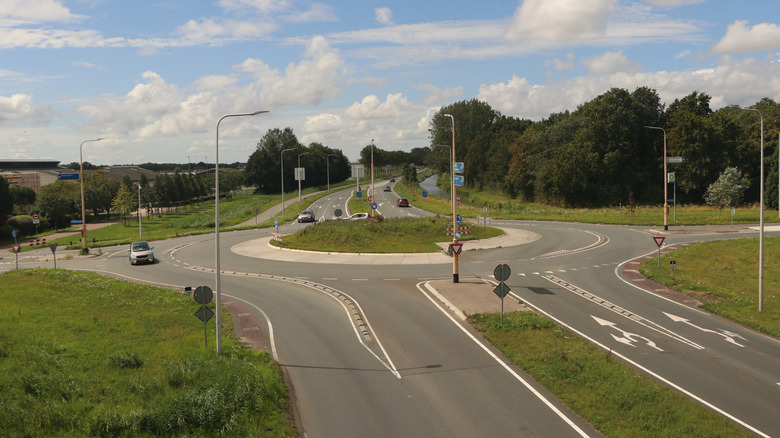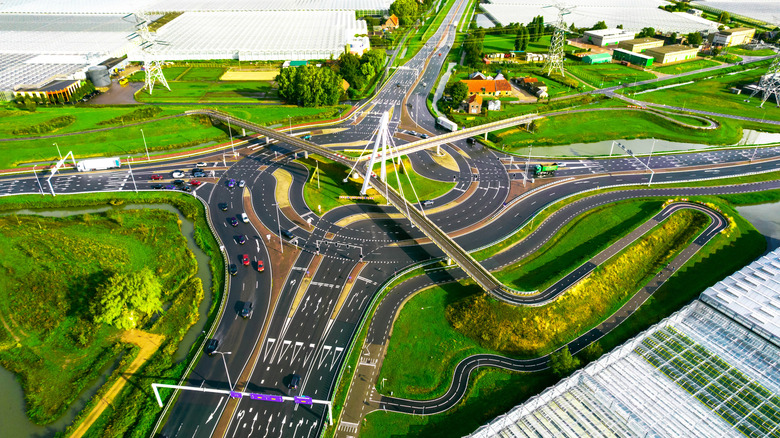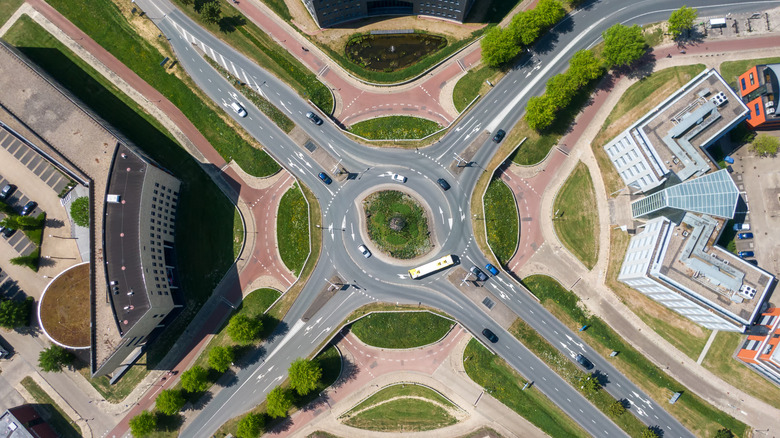What Is A Turbo Roundabout And How Do You Safely Navigate One?
Though they are not yet common in the United States, turbo roundabouts have been quietly changing intersections all around Europe since the late 1990s. Designed to lower collisions and confusion by a mix of smart geometry and enforced lane discipline, turbo roundabouts developed in the Netherlands as a safer and more efficient alternative to conventional multilane roundabouts.
Although its design is far more rigid, a turbo roundabout may at first seem like a conventional traffic circle. Rather than letting drivers switch lanes inside the roundabout itself, a common cause of collisions in multilane circles, turbo roundabouts have raised curbs and physical lane divisions to direct vehicles along predetermined paths. This unusual design aims to remove side-impact and rear-end collisions as well as weaving.
Turboroundabout.com claims that compared to conventional roundabouts, turbo roundabouts can lower major collisions by up to 72%. As urban designers seek to balance speed, safety, and space efficiency, these creative intersections could play a part in the future of American road design as interest grows in traffic flow, road safety, and roads without traffic lights.
Why turbo roundabouts are safer
Through a spiraling, guided design, turbo roundabouts simplify the decision-making process, unlike conventional roundabouts, where drivers sometimes suddenly change lanes or hesitate at entry points. Using non-mountable curbs and lane separators, once a driver enters, they are channeled, thus physically preventing last-minute merges or exits. Each vehicle therefore follows a predictable, continuous path with few conflict points, greatly benefiting the future of car safety.
By means of subtle directional change known as deflection, which forces vehicles to move gently rather than go straight ahead, the geometry of turbo roundabouts enforces slower approach speeds and smoother movement from the drivers. At the core of the controlled entry and exit system is the mitigation of angle and merging crashes that come about in conventional multilane roundabouts.
These roundabouts are especially suited for intersections where traffic direction and volume vary, like those in commuter corridors or frequented logistics routes. Turbo roundabouts control high-capacity traffic without the need for signals or sophisticated signage by assigning lanes before entry and keeping vehicles locked into their intended paths.
How to navigate a turbo roundabout
Especially for American drivers who are used to flexible lane changes, navigating a turbo roundabout for the first time may seem unintuitive. The secret is to decide on your lane well before you arrive at the roundabout. Your lane choice is based on your intended exit point — signs and pavement markings leading up to the turbo roundabout will show you which lane to select. You commit to that lane's particular exit route once you're in it.
This focus on pre-selection limits opportunities for improvisation. It's not a case of lane changes being discouraged inside the roundabout; you are physically prevented from them thanks to the raised separators. That makes slowing down, reading the signs, and confidently selecting your lane absolutely vital.
Should you find yourself approaching one of these junctures slow down to evaluate, be aware of yield signs and any other directional signals, and commit early to the correct lane. See the roundabout as a guided track rather than a choose-your-own-adventure loop. Drivers should expect more educational initiatives by transportation departments to provide clearer guidance on how to use turbo roundabouts as they slowly make their way into the U.S.


